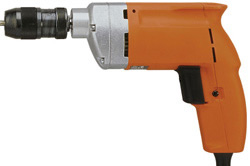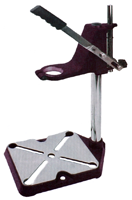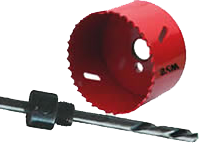
The choice of the drill
The drill must have sufficient power to perform the work and must also have the ability to adjust the rotation speed based on the type of point being used to not burn the wood.
Fundamental is that it is easy to handle and robust. that has a good grip.
The spindle must be robust and it is advisable to use the self-locking model that tightens us without the use of keys.

Column support
Thanks to this type of support it is possible to fix a hand drill and use it like a column drill to make very precise and perfectly vertical holes.
Using the drill
Grip correctly, in a safe position so that you can not unbalance yourself.
Do not apply excessive force on the material to be drilled and allow the bit to cut the piece to be drilled without excessive friction.

Tips for the carpenter
Helical tips
These are traditional drill bits that can pierce the wood as well, during rotation the shavings are ejected from the helical screw.

Ears Forstner
They are the most precise and specific for wood and allow you to make clean and perfectly calibrated holes

Screw tips
The countersunk for countersunk head screws are also drilled in a single hole.
Three-pointed ears
Ideal for tearing and compensated woods. they can also make blind holes

Throwing Ears
They are the cheapest and are suitable for rustic jobs.
Ears for hinges
They are specific to hinges because they are tailor-made.

Adjustable Ears
They can drill holes from 16 to 70 mm

Hole saws
They are drill bits for 3 to 12 cm holes, they too should be used at low speed
Flagpoles
Drilling up to 20 cm can be used at low speed.